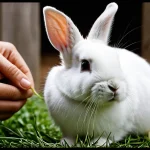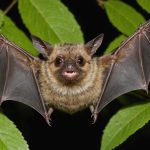Defining the Unique Identity of UK Dog Breeds
UK dog breeds boast a distinctive identity rooted in both appearance and heritage. These breeds often exhibit physical traits tailored to the British climate and terrain, such as dense coats for wet weather or sturdy builds for rugged landscapes. For instance, the iconic Bulldog features a muscular frame and broad shoulders, reflecting a legacy of strength and resilience typical among British dog traits.
Historical backgrounds shape the British breed identity profoundly. The Border Collie, celebrated for its intelligence and herding abilities, has been a staple of rural Britain for centuries. Similarly, the Cavalier King Charles Spaniel’s elegant design embodies aristocratic British tastes from the 17th century, showcasing the intertwining of breed and culture in the UK.
Also read : What are the UK rules for dog-friendly public transport?
Recognition of British breeds by kennel clubs underscores their unique standards and qualities. Each UK dog breed adheres to specific criteria that preserve its heritage while guiding breeders in maintaining the authentic British dog traits. This formal acknowledgment helps sustain the breeds’ unique status and promotes understanding among dog enthusiasts worldwide.
Physical Characteristics Setting UK Dogs Apart
UK dog breeds showcase distinct physical traits shaped by both environment and purpose. These traits form the backbone of the British dog appearance, often adhering strictly to breed standards maintained by kennel clubs. For example, the Bulldog is renowned for its muscular build and loose skin, reflecting strength and resilience. This contrasts with the Scottish Terrier’s compact size, which allows it to navigate rugged terrain effectively.
In the same genre : How Can Adopting Dogs Help Reduce Shelter Populations in the UK?
Many UK dogs have developed physical adaptations to cope with the British climate. Their coats range from dense and weather-resistant, shielding against rain and cold, to shorter fur suitable for milder seasons. These adaptations are crucial in a region known for variable weather conditions.
Breed standards focus not only on looks but functionality, ensuring dogs meet specific physical criteria that enable them to perform traditional roles, like herding or guarding. This combination of features—muscularity, size, and coat type—sets UK breeds apart distinctly, preserving their unique heritage while optimizing survival and efficiency in British environments.
Temperament and Behavioral Qualities of British Breeds
British dog temperament is often defined by a unique blend of loyalty, intelligence, and resilience. Many UK breed behavior traits stem from centuries of selective breeding tailored to specific roles, such as herding or guarding. These dogs typically display a strong work ethic and a high capacity for learning, making them excellent companions for various family environments.
Social behaviours in British breeds commonly reflect a balanced nature; they tend to be affectionate with family members while maintaining a cautious approach to strangers. This adaptability makes them suitable for households seeking both companionship and protection. For instance, breeds like the Border Collie demonstrate an unparalleled herding instinct, showcasing their natural drive to manage livestock while also bonding closely with owners.
Working dogs UK often exhibit innate behavioral patterns that optimize their functional roles. Many retain guarding instincts, alerting owners to unusual activity while remaining controllable thanks to their intelligence. Understanding these temperament nuances helps prospective owners choose a breed aligned with their lifestyle, ensuring a harmonious relationship grounded in mutual respect and the breed’s natural inclinations.
Historical Roles and Regional Heritage
The ancestry of UK dogs is deeply intertwined with the country’s rural and cultural heritage. Many traditional British breeds were developed to serve specific purposes, reflecting the needs of their regional environments. For example, herding dogs like the Border Collie originated in northern England and southern Scotland, prized for their intelligence and agility in managing sheep across rugged terrain.
Hunting breeds such as the English Setter and the Labrador Retriever were bred for tracking and retrieving game, showcasing how British hunters tailored dogs to their hunting styles. The regional British breeds often embody traits that made them ideal working companions, including stamina, keen senses, and loyalty.
Over centuries, selective breeding preserved these traits, resulting in distinct breeds that mirror the landscape and customs of their regions. The UK dog breed history reveals a clear connection between the animals’ roles and their local communities, from rugged Scottish highlands to pastoral English farmlands. Understanding these origins helps appreciate the cultural significance and evolution of beloved UK dog breeds.
Contributions to Canine History and Global Influence
Exploring the foundational role and far-reaching impact of UK dog breeds
The UK dog breed influence is undeniable in shaping global canine standards. British dogs worldwide have established themselves not only as beloved companions but as pillars in the development of diverse dog breeds across continents. UK breeds such as the Border Collie, Bulldog, and Cavalier King Charles Spaniel serve as foundational ancestors in numerous international lineages.
British breeds often exemplify traits highly sought-after in competitions globally, enhancing their reputation. For example, the Border Collie’s intelligence and agility make it a staple in international dog sports, while the Bulldog’s unique appearance and temperament have influenced breed standards worldwide.
Moreover, British dogs enjoy international recognition in popular culture, appearing in films, literature, and public events that celebrate canine heritage. Their presence in elite competitions underlines their importance in both historical and contemporary contexts, showcasing the lasting legacy of UK dog breeds on the global stage. Their adaptability and exemplary traits continue to inspire breeders and enthusiasts internationally.
How Robot Hoovers Adapt to Different Flooring Types
Robot hoovers are designed to handle various flooring types, a feature that greatly enhances their versatility. Most models come equipped with sensors and adaptive brushes that automatically adjust to surfaces like hardwood, carpet, tiles, or laminate. When transitioning from a hard floor to a thick carpet, intelligent robot hoovers will increase suction power to ensure thorough cleaning.
This adaptability is crucial because different flooring materials require varied cleaning approaches. For instance, hardwood floors need gentle brushing to avoid scratches, while carpets demand deeper suction to remove embedded dirt. The robot hoover’s sensors detect surface changes and command the motor to adjust accordingly, optimizing both cleaning efficiency and battery life.
Users should look for robot hoovers with multi-surface cleaning technology if they have mixed flooring at home. Knowing that a robot hoover can seamlessly switch between floor types reduces the need for manual intervention, making daily maintenance simpler. This technology represents a blend of expert engineering and convenience, delivering reliable results across all flooring conditions.




